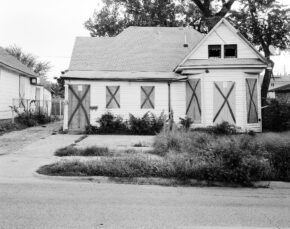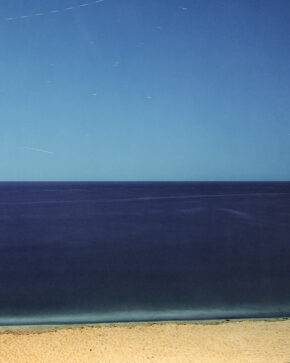I read a great quote from Mario Batali (but suddenly can’t find it) about what makes a professional chef.
He says the difference between an amazing amateur chef and a professional chef is the ability to make that perfect meal 100 times in a row.
That applies to photography too.


20 Comments
a amateur does it until they get it right.
a professional does it until they can’t get it wrong.
I think it’s important to note the difference between being consistent and being repetitive. Anybody can learn to make the same picture 100 times with enough practice, and unfortunately, many do that and call themselves pro. Being consistently creative is another story.
If I knew how to take a good photograph, I’d take one every time.
So there.
professional is not about knowing whats right,
but to be able to avoid all the /wrong/ mistakes.
So, is Iron Chef America the equivalent to editorial?
Liz Miller Gershfeld from EnergyBBDO talks about it in a photoshelter talk. Search itunes for her name and photoshelter and the video podcast should show up.
I hate making any one same thing 100 times. maybe that’s why I’m an amateur novice…
Where does the bravery of doing something no one agrees is right (yet) play in to becomming a ‘professional,’ that is, a commercially succssful photographer? Bravely consistent? Consistently brave?
“It’s easy to be great occasionally it really hard to be good consistently” Avedon
It’s about consistency / repeatability of style and bringing your “A” game no matter what is happening in your life – having fun while your doing it. You bring 110% when you’re not necessarily thrilled with the project you just accepted because you need the money while doing enough research to put your clients at ease, and finally, delivering a product that makes the guy/gal who put their career on the line to choose you look like a genius. And finally, doing it in a way that leaves everyone feeling as though it was easy for you and leaving them excited to do it again because it was so much fun. Ultimately they leave feeling as though they are leaving a family of friends and want more than anything to have you all over for a BBQ at their house.
That’s Professionalism.
What makes you think that the opposite of professional is the amateur? Are they even remotely related? Obviously they don’t even compete, because the amateur – by definition – is not available for hire.
There seems to be this inferiority complex thing going in this business: the amateurs think being a ‘pro’ is the ultimate goal. The pros on the other side feel that the weekend snappers (who can occasionally produce very good work) are undermining their credibility and value. Then they produce quotes like these…
Dirk, could it be that you dont have to compete against one-dollar-or-less stock images? well, the high-profiled editorial photographer hopefully neither. but there’s lots of us that would like to have the weekend snappers with their digital cameras and broadband internet connection go away just for business reasons.
and please do away with google images at the same time, dear gods.
@ Scott: You may be on to something with the iron photographer idea. 1 hour. 1 subject. Two photographers shoot 7 setups with their crew of assistants, stylists, hair, makeup and producer. Steven Klein vs. Steven Meisel!
Are professionals willing to kiss more frogs?????????????
http://fashionfotonotes.blogspot.com/2006/03/kiss-frog.html
As mentioned above, Liz Miller Gershfeld quotes it in her Photoshelter presentation. It is from a book by Bill Buford called “Heat: An Amateur’s Adventures as Kitchen Slave, Line Cook, Pasta-Maker, and Apprentice to a Dante-Quoting Butcher in Tuscany” Buford chronicles his working at Batalli’s restaurant, Babbo in NYC and then later following his footsteps through Italy.
It’s a great read.
@Bernd: your problem isn’t “the competition”; your problem are buyers happy and willing to pay little money for bad product.
I don’t think any art buyer is happy buying $1 images, it’s pressure from there end clients that drive them there. My wife is a designer and is forced to use RF stock all the time because clients don’t see the value in photography.
@Dirk: well, first its not my problem, because i stayed away from stockphotography since ever. actually i work on the other end of the spectrum: single pictures meant for low circulation numbers.
and then its not that the products are bad. actually a lot of the amateurs have the resources to produce good work with unlimited timeframes. stock doesnt care if the pic was done yesterday or ten years ago. if it fits, it fits.
may i quote? “As a novice, it is by far more unlikely to cook a delicious meal that is on par with a trained and experienced chef. As opposed to the chances of taking a good quality photograph (or one in thirty six for that matter).”
hope you know where that comes from.
now add digital + broadband internet and you get my equation.
Yes, monkeys on typewriters have finally arrived. Thanks for the quote :)
[…] Haggart, в блоге A Photo Editor, дает определение профессионалу цитируя Mario Batali, который писал, что различие между «прекрасным […]
[…] Haggart, в блоге A Photo Editor, дает определение профессионалу цитируя Mario Batali, […]
Comments are closed for this article!